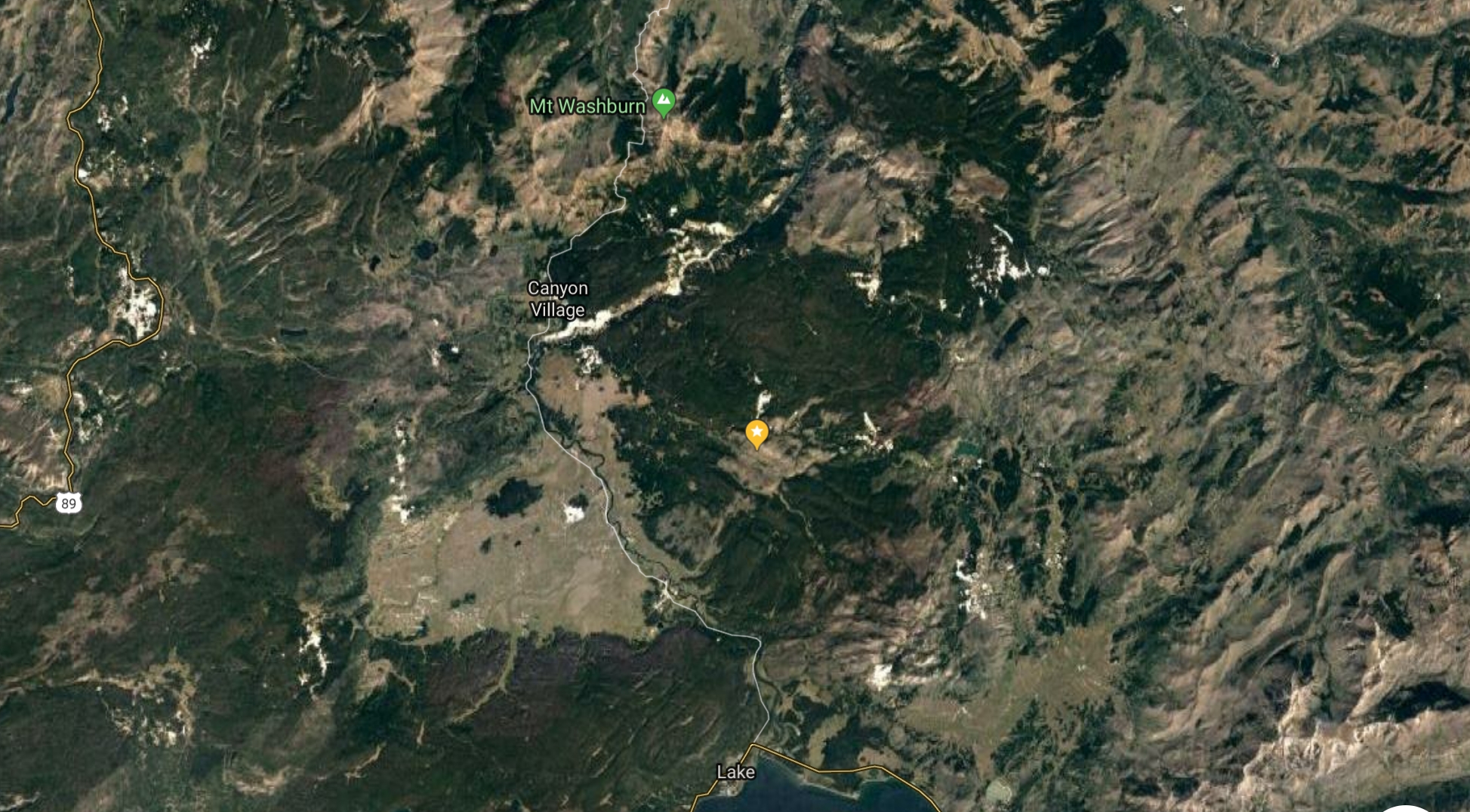It looks like you're using an Ad Blocker.
Please white-list or disable AboveTopSecret.com in your ad-blocking tool.
Thank you.
Some features of ATS will be disabled while you continue to use an ad-blocker.
share:
From what I can see and the videos that document the Yellow Stone Volcano (caldera). It seems to always erupt in a separate place. If one follows the
track of eruptions, not only is Yellow Stone never going to actually erupt. The next eruption will be in South Dekota or Nebraska. Just food for
thought.
originally posted by: RobertCavitt
From what I can see and the videos that document the Yellow Stone Volcano (caldera). It seems to always erupt in a separate place. If one follows the track of eruptions, not only is Yellow Stone never going to actually erupt. The next eruption will be in South Dekota or Nebraska. Just food for thought.

Anyway, welcome to ATS and enjoy your stay

a reply to: Plotus
So all this conspiracy behind Yellow Stone and Nasa trying to make it erupt, well its just that conspiracy click bait. Why would nasa ever try to erupt a dying volcano. LOL they better start drilling around Dead wood South Dekato if they want to see fire works.
So all this conspiracy behind Yellow Stone and Nasa trying to make it erupt, well its just that conspiracy click bait. Why would nasa ever try to erupt a dying volcano. LOL they better start drilling around Dead wood South Dekato if they want to see fire works.
Most geologists would disagree with you. That's like saying Mt. St. Helens will erupt in a different place next time.
a reply to: schuyler
Yes, but Mount Saint Helens is a totally different type of volcano. There is evidence to support the event that causes eruption such as Yellow Stone is in fact Oceanic plate shifting not so much the case with Mount Saint Helens. Anyways I love to check the seismic activity at yellow stone. The next logical place would be in or around Dead Wood South Dekato. However that location hasn't had any seismic activity since 1996. Just thought this would be a fun topic. thanks for the reply.
Yes, but Mount Saint Helens is a totally different type of volcano. There is evidence to support the event that causes eruption such as Yellow Stone is in fact Oceanic plate shifting not so much the case with Mount Saint Helens. Anyways I love to check the seismic activity at yellow stone. The next logical place would be in or around Dead Wood South Dekato. However that location hasn't had any seismic activity since 1996. Just thought this would be a fun topic. thanks for the reply.
Moving this to Fragile Earth forum since it is not a Introduction thread.
Iceland's Bárðarbunga system is "probably" the next big one in the northern hemisphere.
Just a guess.
Just a guess.
Now that this is in the right place:
The Yellow Stone caldera is not dead or extinct. There is a HUGE magma chamber below it that has been mapped out in great detail.
The geysers and hot springs located within the park also show that it is anything but dead.
Earthquake swarms showing magma movement also show that it is certainly not dead.
As for the where: best bet is where the new dome is rising....as that's always a good indication with volcanos:

The Yellow Stone caldera is not dead or extinct. There is a HUGE magma chamber below it that has been mapped out in great detail.
The geysers and hot springs located within the park also show that it is anything but dead.
Earthquake swarms showing magma movement also show that it is certainly not dead.
As for the where: best bet is where the new dome is rising....as that's always a good indication with volcanos:

edit on 3/3/2019 by eriktheawful because: (no reason given)
a reply to: RobertCavitt
As far as I know,Yellowstone is not a dead volcano,just
dormant.But,with all of the activity in the park I think
it will blow in my life time.
As far as I know,Yellowstone is not a dead volcano,just
dormant.But,with all of the activity in the park I think
it will blow in my life time.
a reply to: RobertCavitt
I was looking at that one as well on google earth. Doesn't it seem that its also sitting is a sunken dome itself. I have not seen or heard any scientific evidence but it would appear as if this is also a possible post eruption dome.next caldera
I was looking at that one as well on google earth. Doesn't it seem that its also sitting is a sunken dome itself. I have not seen or heard any scientific evidence but it would appear as if this is also a possible post eruption dome.next caldera
originally posted by: eriktheawful
Moving this to Fragile Earth forum since it is not a Introduction thread.
Thank you. Now I can star and flag🤗👍
a reply to: RobertCavitt
Your link is an app ad.

Do you have coordinates that I can put in place for you?😊
This?
44.6746721, -110.3850219

Your link is an app ad.

Do you have coordinates that I can put in place for you?😊
edit on 3-3-2019 by Bigburgh because: (no reason given)
This?
44.6746721, -110.3850219

edit on 3-3-2019 by Bigburgh because: (no reason given)
a reply to: RobertCavitt
What about this one,
zoom out caldera not listed or mapped ?? or just some other reason nothing seems to be growing in this particular area
43.896500, -108.317000
What about this one,
zoom out caldera not listed or mapped ?? or just some other reason nothing seems to be growing in this particular area
43.896500, -108.317000
edit on 3-3-2019 by RobertCavitt because: (no reason given)
a reply to: eriktheawful
I'm not suggesting the area is dead just that the major caldera eruptions don't seem to happen in close proximity to one another, If yellow stone did erupt in a cataclysmic episode it would not be following the pattern of previous earth killers, but we are talking about good old mother earth here..
I'm not suggesting the area is dead just that the major caldera eruptions don't seem to happen in close proximity to one another, If yellow stone did erupt in a cataclysmic episode it would not be following the pattern of previous earth killers, but we are talking about good old mother earth here..
edit on 3-3-2019 by RobertCavitt because: (no reason given)
originally posted by: RobertCavitt
a reply to: Bigburgh
It takes a second to load but it goes straight to new caldera for me
Still having the app issue.
However what you say is intriguing... why? Because Hawaii for example. Plate tectonics move right?. The magma vent keeps producing as land mass moves over it. So you have a chain of islands over it. Atolls and islands like Midway to Honolulu.
So it would be safe to say in that condition, that the Caldera has moved since the last eruption
2.1 million years ago
The volcanic feature commonly called the Island Park Caldera in the state of Idaho, USA, is actually two calderas, one nested inside the other. The Island Park Caldera is the older and much larger caldera, with approximate dimensions of 58 miles (93 km) by 40 miles (64 km). Its ashfall is the source of the Huckleberry Ridge Tuff that is found from southern California to the Mississippi River near St. Louis. This supereruption (2500 cubic kilometers) occurred 2.1 million years BP and produced 2,500 times as much ash as the 1980 Mount St. Helens eruption. The caldera clearly visible today is the later Henry's Fork Caldera that is the source of the Mesa Falls Tuff. It was formed in an eruption of more than 280 cubic kilometers 1.3 million years BP. The two nested calderas share the same rim on their western sides, but the older Island Park Caldera is much larger and more oval and extends well into Yellowstone Park. The Island Park Caldera is sometimes referred to as the First Phase Yellowstone Caldera or the Huckleberry Ridge Caldera. To the southwest of the caldera lies the Snake River Plain, which was formed by a succession of older calderas marking the path of the Yellowstone hotspot. The Plain is a depression, sinking under the weight of the volcanic rocks that formed it, through which the Snake River winds. Other observable volcanic features in the Plain include: the Menan Buttes, the Big Southern Butte, Craters of the Moon, the Wapi Lava Field and Hell's Half Acre. These calderas are in an area called Island Park that is known for beautiful forests, large springs, clear streams, waterfalls, lakes, ponds, marshes, wildlife, and fishing. Harriman State Park is located in the caldera. Snowmobiling, fishing, and Nordic skiing, and wildlife viewing are popular activities in the area. The peaks of the Grand Tetons to the southeast are visible from places in the caldera.
Again
Welcome to ATS
Actually, the next super volcanic eruption is likely to take place in a different system altogether.
You might check out Campi Flegrei in Italy for the possible next culprit. And of course, you can never discount the volcanoes along the Asian side of the ring of fire there are some that lie along some suspicious structures -- perhaps something pops along the Kamchatka area. And the volcanoes in the Andes are also very understudied.
You might check out Campi Flegrei in Italy for the possible next culprit. And of course, you can never discount the volcanoes along the Asian side of the ring of fire there are some that lie along some suspicious structures -- perhaps something pops along the Kamchatka area. And the volcanoes in the Andes are also very understudied.
new topics
-
USSS Agent Fired for Having Sex In Michelle Obama's Bathroom
US Political Madness: 1 hours ago -
Watching TV
Jokes, Puns, & Pranks: 4 hours ago
top topics
-
RFK is Trumps health pick
2024 Elections: 12 hours ago, 19 flags -
USSS Agent Fired for Having Sex In Michelle Obama's Bathroom
US Political Madness: 1 hours ago, 6 flags -
Watching TV
Jokes, Puns, & Pranks: 4 hours ago, 5 flags
active topics
-
FLORIDA Sues Biden-Harris FEMA for Denying Disaster Assistance to Homeowners with TRUMP Signs.
US Political Madness • 47 • : network dude -
USSS Agent Fired for Having Sex In Michelle Obama's Bathroom
US Political Madness • 12 • : WeMustCare -
WATCH LIVE: US Congress hearing on UFOs, unidentified anomalous phenomena
Aliens and UFOs • 68 • : WeMustCare -
The Reactionary Conspiracy 13. The plot’s theology.
General Conspiracies • 296 • : MarxistDebunker2 -
Thune selected as Senate Republican Leader
US Political Madness • 72 • : CriticalStinker -
The art of being offended
Social Issues and Civil Unrest • 38 • : bastion -
Post A Funny (T&C Friendly) Pic Part IV: The LOL awakens!
General Chit Chat • 7774 • : underpass61 -
The Acronym Game .. Pt.4
General Chit Chat • 955 • : tinkerbell99 -
RFK is Trumps health pick
2024 Elections • 8 • : marg6043 -
Qatar kicks out HAMAS
Middle East Issues • 20 • : bastion

